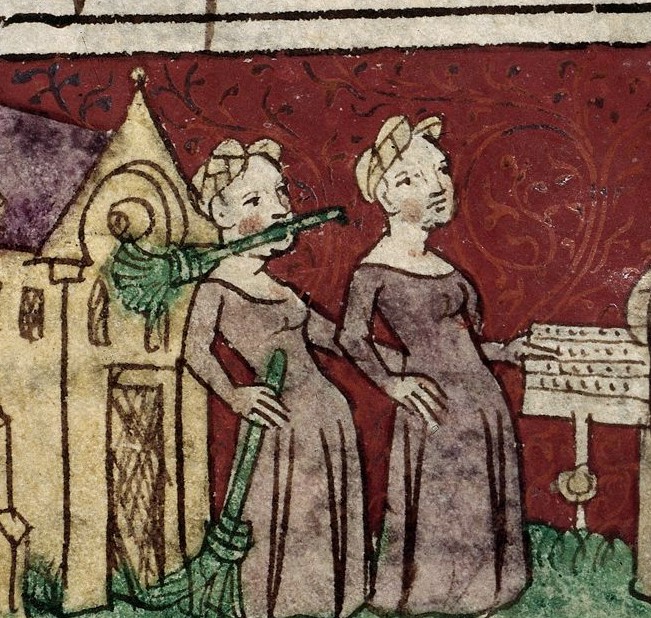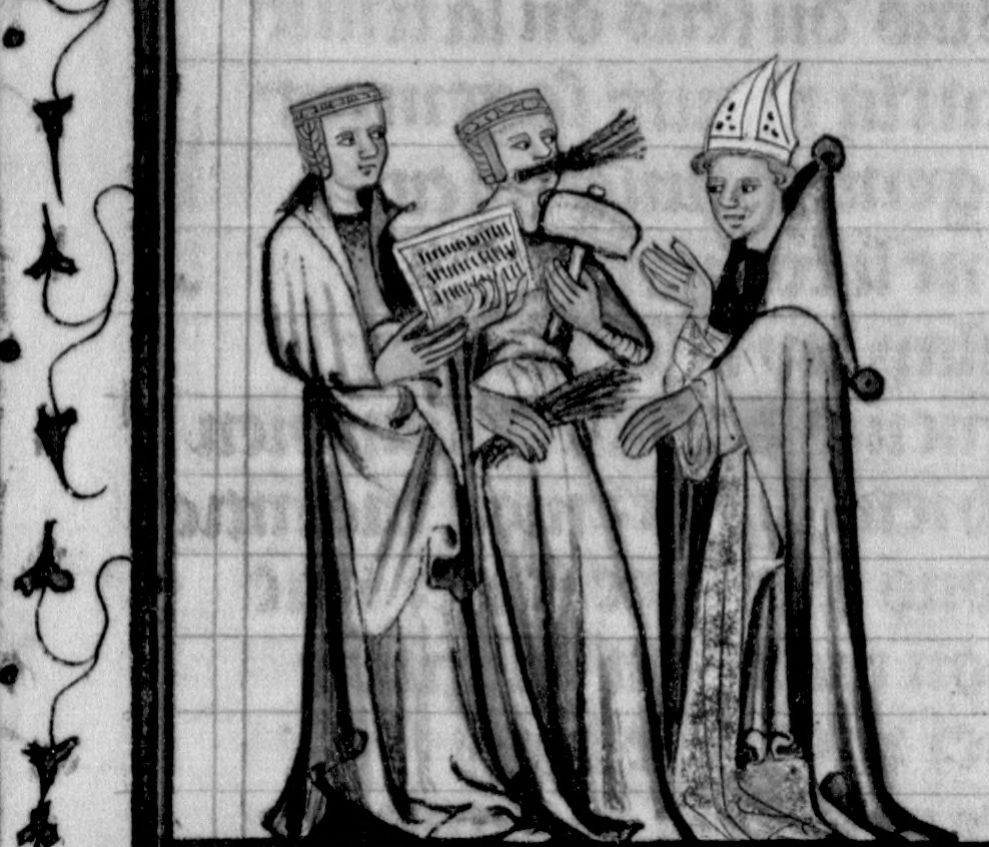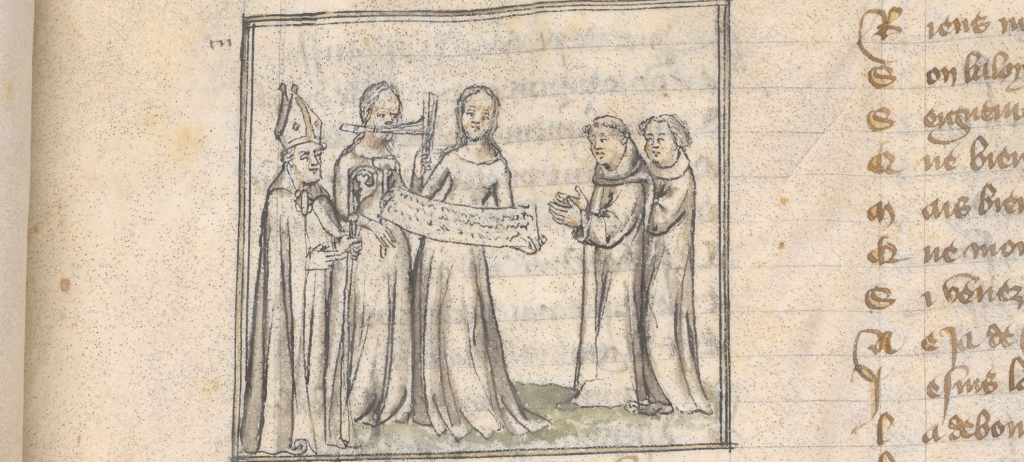
I’m currently preparing a paper for Leeds IMC this year on the Jeu de Pèlerinage humaine — the fifth playscript in the collection owned by the Carmelite convent at Huy, which forms one of the core groups of texts we are focusing on during the project. In several ways this script stands out from the others in the manuscript: most obviously, it’s been carefully and closely adapted for performance from part of a popular and widely-disseminated pre-existent allegorical narrative poem, Guillaume de Deguilleville’s Pèlerinage de vie humaine. The Pèlerinage was often illustrated as part of its manuscript transmission (some of its rich iconographic traditions were the subject of a doctoral thesis by Michael Camille in 1985), and many of its allegorical characters, indeed, are described quite minutely within the text, in terms of their idiosyncratic physical appearances, bodily attributes, clothing and acoutrements: descriptions which can result in some very peculiar illuminations! (You can see something of what I mean by browsing the dossier of images from BnF MS fr. 829 published in the recent edition of the second recension of Deguilleville’s poem by Graham Robert Edwards and Phillipe Maupeu).
This very particular manuscript tradition provides an unusual context for the Jeu de Pèlerinage. Not only can the text of the play, unusually, be compared to a known and apparently widely-read narrative source, allowing us to uncover ways in which its adaptors conceived of and effected the transfer from first-person narrative to performed, embodied theatre; we can also think about the ways in which the poem’s iconographic and visual traditions might have inspired, or otherwise impacted on performances. Might illuminations of the Pelerinage provide pointers or starting points for thinking about how the Carmelite sisters who copied the Jeu de Pèlerinage may have designed their performance attire (if indeed they did perform the play they anthologised, and if they performed it in attire other than their habits)? What might an eventual performance have looked like, in terms of of visual effects, articles of clothing and objects that could have been integrated into the play?
The idea of looking at manuscript iconography to provide some ideas about this seemed good in principle: then I came up against the character Pénitence, who – along with her companion, Charité — explains in a long and detailed speech the ways in which she mediates access to the Eucharist. Pénitence is described by the narrator of the Pèlerinage as, surprisingly, holding a brush or ‘balay’ in her mouth (‘Entre ses dens, en sa bouche / Ot balay, qui plus me touche’, ed. Edwards/Maupeu, p. 242). The narrator admits that this is rather odd, to say the least; she holds the brush in her teeth, he notes, ‘courtoisement’ (in a dignified, courtly manner), and ‘moins sage point n’en sembloit’ (she didn’t seem at all less wise for it). Indeed, had anyone else but her chosen to behave in this way, ‘Pour hors de sens on le tenist’ (one would have considered them to be out of their mind). I think that’s probably a fair assessment.



While it’s perfectly possible, of course, for a narrative poem to describe a woman holding a brush in her mouth, and then purport to relay the long and detailed monologue that she proceeds to utter, as soon as one brings physical performance into play, some very obvious problems start to arise. The Jeu de Pèlerinage removes the narrator’s description of Pénitance completely: as a character in the play, she just appears in the playing space at the ‘right’ time, and begins to speak. But, as part of her discourse, she actually explains the signficance of the orally-carried brush, as well as other objects she carries in her hands — and these lines have all been retained in the Jeu. Which leaves me with the question – how does an actress play the part of Pénitence and hold a brush in her mouth? Did she actually walk ‘on stage’ looking like this (and did everyone start laughing?), but remove the brush for speaking? Or, is this a sign that the Jeu de Pèlerinage was perhaps not designed for physical performance at all? But if that were the case, why go to the trouble of adapting it as a play-script and/or copying it in an anthology of play-scripts in the first place?
I hope to develop, if not answers, then further hypotheses around these questions in the coming weeks! In the meantime, if anyone has any comments or ideas, I’d love to hear them.
–Liv.